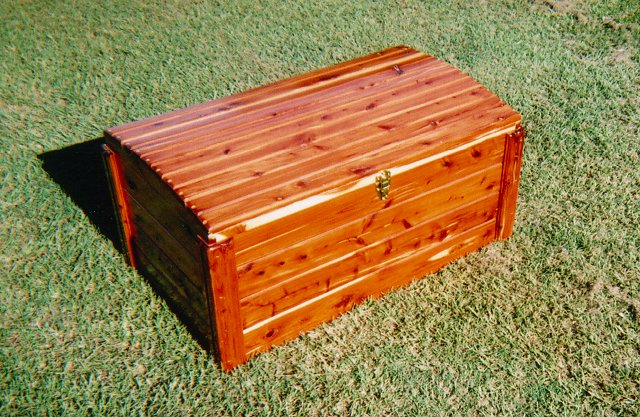With all due respect, I completely disagree. The slight amber cast may be an issue on some light woods (though I like it), but on something like cedar it would be hard to detect. It is an excellent protector; there are even some high end deck sealants with tung oil as the primary ingredient. It event protects against alcohol (somehow this solvent ends up on furniture a lot :mrgreen

. It is more of a satin than gloss, so if that's what you are after you won't be as happy with it (though I have seen a top coat of bees wax and tung buffed out pretty shiny). I use pure tung oil, not the toxic stew that a lot of companies sell as a tung oil finish. Pure does dry slower and your shop will smell like a lot of the time, but it is a safe smell.
Hikin' up pants, and rollin' up sleeves....
Disagreement is good, it's the basis for good discussion. Maybe I should have prefaced my comment with "compared to other finishes"
To quote Mr. Howard Acheson, who IMO has forgot more about finishing than most know -
"However, they are better finishing products than pure tung oil.
Pure tung oil has little or no water or watervapor resistance nor does it have any abrasion resistance. It takes a long time to cure and requires many coats to provide any real long term appearence. You will have to renew it periodically to maintain its appearence."
"There are two "true" oils used in finishing. One is linseed oil which comes from flax seeds. The second is tung oil Which comes from a nut tree that originally grew in China. Both are called drying oils although neither really fully dries and becomes hard. The primary use of both is in manufacturing oil based finishes.
Real tung oil has acquired a cachet in the past twenty years that seems to elevate it to some type of magic potion. In fact, as a finish, it does not offer anything much different than linseed oil. In spite of the hype, is not significantly more water resistant than linseed oil--both are lousy--nor is it any more durable. Used alone both are fairly inferior "finishes". About the only difference is that tung oil is slightly less amber than linseed oil but it also is slightly less effective at "popping" the grain. By most measures, it is not significantly different from linseed oil."
Tung oil or BLO applied to almost any wood will enhance the color. It won't offer much protection, compared to other finishes. It does offer very good repair-ability. I guess the definition of a good protective finish should be based on what you need the protection from. For a turning or other object d' art a Tung oil finish and some wax is ideal..it feels great. But for a furniture piece or something that is going to be exposed to significantly more use, and is composed of larger pieces of wood that can benefit from moisture exchange mediation, I think that Tung oil is a poor choice as a finish, but it will enhance the wood's color and is a good choice as part of the finish schedule.
MTCW,
Dave



